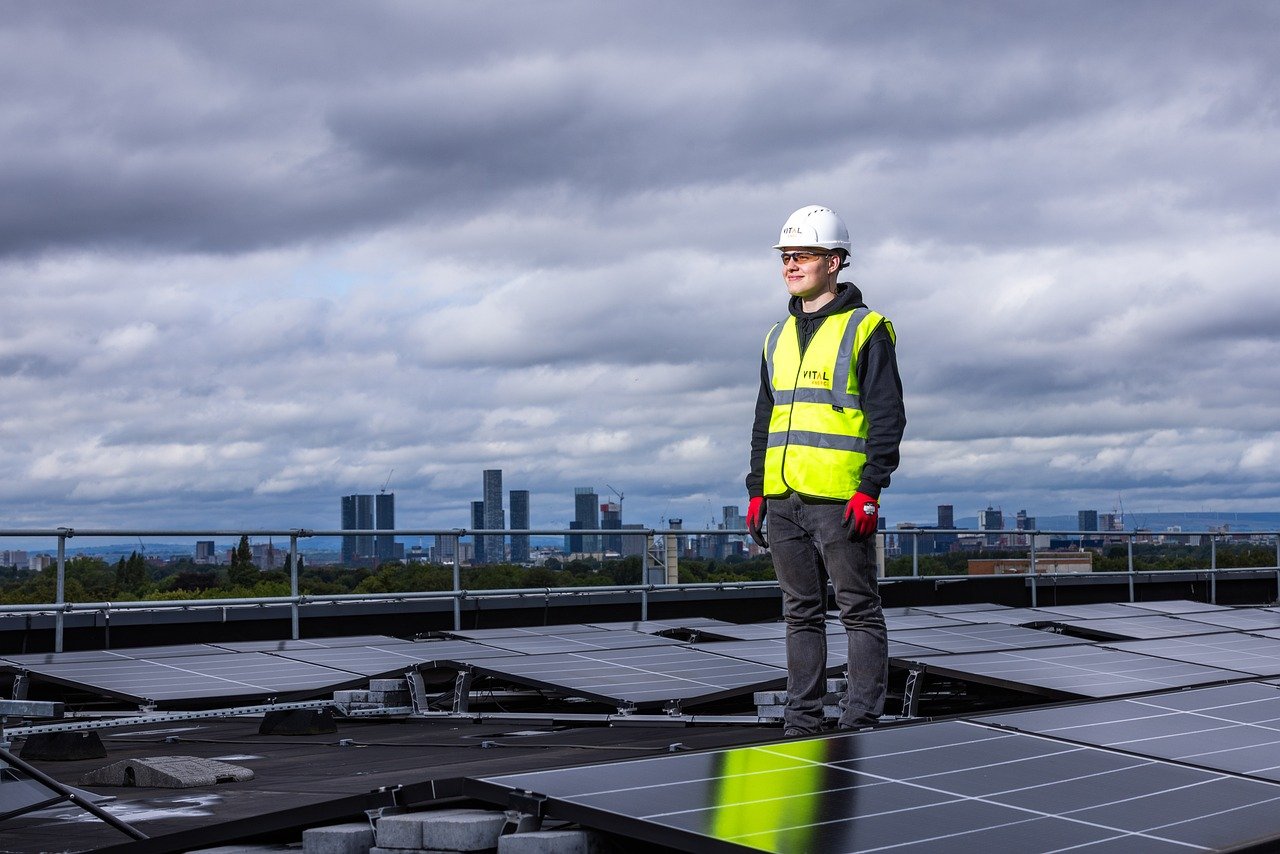India has been enthusiastically promoting the adoption of rooftop solar power systems to reduce its reliance on fossil fuels and mitigate climate change. The government has introduced many incentives and subsidies to encourage consumers so that they install solar panels on their rooftops. This article will explore the different state-specific and central government incentives available for rooftop solar installations in India, highlighting the benefits and steps to avail these incentives.
| Installed Capacity of Roof Top Solar (RTS in India): 2651.10 M W as of 30 November, 2023 |
Rooftop Solar Installations in India
State/UT | Cumulative Installed Capacity (MW) |
Andaman & Nicobar | 0.00 |
Andhra Pradesh | 5.03 |
Arunachal Pradesh | 0.22 |
Assam | 0.63 |
Bihar | 7.13 |
Chandigarh | 9.31 |
Chhattisgarh | 4.08 |
DNH&DD | 0.39 |
Goa | 1.98 |
Gujarat | 1956.85 |
Haryana | 46.06 |
Himachal Pradesh | 2.77 |
J&K | 12.86 |
Jharkhand | 0.56 |
Karnataka | 3.14 |
Kerala | 210.92 |
Ladakh | - |
Lakshadweep | - |
Madhya Pradesh | - |
Maharashtra | 117.21 |
Manipur | 0.33 |
Meghalaya | 0.21 |
Mizoram | 0.59 |
Nagaland | 0.10 |
NCT of Delhi | 5.62 |
Odisha | 1.50 |
Puducherry | 0.30 |
Punjab | 30.73 |
Rajasthan | 67.05 |
Sikkim | 2.67 |
Tamil Nadu | 10.51 |
Telangana | 37.13 |
Tripura | 0.03 |
Uttarakhand | 10.22 |
Uttar Pradesh | 63.76 |
West Bengal | 67.13 |
Total | 2651.10 |
Note: The cumulative installed capacity is as of November 30, 2023.
| Roof Top Solar Capacity installations growing at compounded annual growth rate (CAGR) of 46% - PIB (Press Information Bureau) |
Central Government Incentives
Table of contents [Show]
- Central Financial Assistance (CFA)
- Accelerated Depreciation (AD)
- Renewable Energy Certificate (REC)
- Net Metering Incentive
- Loan Incentives
- Uttar Pradesh
- Kerala
- Maharashtra
- West Bengal
- Gujarat
- Tamil Nadu
- Andhra Pradesh
- Jammu
- Other Northeastern States
- National Portal for Rooftop Solar
- State DISCOMs Portal
- Empaneled Vendors
- Benchmarked Installation Cost
- Submission of Documents
- Net Metering
- Commissioning Certificate
- Domestic Manufacturing
- Cost Savings
- Environmental Benefits
- Increased Property Value
- Job Creation
- Conclusion
Central Financial Assistance (CFA)
The Central Financial Assistance (CFA) is a subsidy given through the Ministry of New and Renewable Energy (MNRE) for rooftop solar installations. The CFA is applicable in general category states and Union Territories, and it covers up to 30% of the benchmarked installation cost. This subsidy is designed to reduce the financial burden of installing solar panels and encourage the adoption of renewable energy. The CFA is calculated based on the total solar module capacity or solar inverter capacity, whichever is lower. For example, for a system with a capacity of 2.5 kW, the CFA would be ₹36,470.
Accelerated Depreciation (AD)
Accelerated Depreciation (AD) is an incentive provided by the government for commercial entities making profits. Under this scheme, companies can claim 40% of the total upfront cost as depreciation, reducing their tax liabilities. This means that companies can recover most of the project cost in the very first year through AD. For example, if a company invests ₹2 crores in a rooftop solar power plant, they can claim ₹80 lakhs as depreciation, reducing their taxable profits.
| India Has 637 GW of Residential Rooftop Solar Energy Potential - CEEW (Council on Energy, Environment and Water) |
Renewable Energy Certificate (REC)
The Renewable Energy Certificate (REC) is an incentive provided by the government for solar power generators. RECs are issued for the unused electricity generated from renewable energy sources. These certificates can be traded for financial benefits, providing an additional income source for solar power generators. For example, if a solar power generator generates 1,000 units of electricity, they can receive 1,000 RECs, which can be traded for a financial benefit.
Net Metering Incentive
The Net Metering Incentive is a scheme that enables consumers to sell the extra energy generated back to the grid and offset their electricity bills. Under this scheme, consumers can install a net meter to measure the energy generated and consumed. The excess energy that is generated is sold to the grid. The consumer receives a credit for the energy sold. This incentive encourages consumers to generate their own energy thus reducing their reliance on the grid.
| Target: The government aims to install 100 GW of rooftop solar capacity by 2026, with 40 GW coming from the residential sector. |
Loan Incentives
Loan Incentives are provided by the government to finance rooftop solar installations. These loans are collateral-free and have low interest rates, ranging from 9.9% to 10.75%. The quantum of the loan is 70% of the project cost, with a minimum promoter's contribution of 30%. This incentive makes it easier for consumers to finance their solar installations and reduce their energy costs.
State-Specific Incentives
Uttar Pradesh
Uttar Pradesh offers an additional subsidy of ₹15,000 per kilowatt for residential rooftop solar installations, with a cap of ₹30,000. This is on top of the 30% central financial assistance (CFA) given by the Ministry of New and Renewable Energy (MNRE). The state aims to promote solar adoption and help consumers offset the upfront costs of installation.
| Subsidy Scheme: The government has launched a new subsidy scheme to promote rooftop solar installations, providing ₹7500 crore ($9 billion) in subsidies to install grid-connected rooftop solar systems on around 10 million homes. |
Kerala
Kerala provides a net metering scheme for rooftop solar, allowing consumers to sell excess electricity back to the grid and offset their electricity bills. The state also offers a capital subsidy of 30% for residential and social sector installations, in line with the MNRE's CFA.
Maharashtra
Maharashtra offers a subsidy for solar rooftop installations in cottage and micro industries. The state wants to encourage the adoption of renewable energy in the industrial sector and help businesses reduce their energy costs.
| Job Creation: The rooftop solar sector is expected to create around 1.7 lakh direct jobs across various sectors, including manufacturing, logistics, sales, installation, operation, maintenance, and other services. |
West Bengal
West Bengal requires all large housing societies to install solar rooftop systems to meet a minimum of 1.5% of their total electrical load through solar energy. The subsidies are applicable as per SECI guidelines, providing financial support to consumers.
Gujarat
Gujarat provides a state subsidy of 40% for rooftop solar systems up to 3 kW. It also provides a state subsidy of 20% for systems between 3 kW to 10 kW. These subsidies are available to private residential consumers who install and commission the systems. The state aims to achieve a cumulative target of 8,024 MW of solar energy soon.
| Economic Benefits: Solarising residential households can offer huge economic benefits to power distribution companies (discoms), with lifetime economic gains of INR 2,700 crore per 100 MW of installed capacity. |
Tamil Nadu
Chief Minister's Solar Rooftop Capital Incentive Scheme: Provides an additional capital subsidy of ₹20,000 per kilowatt for grid-connected domestic solar PV systems, on top of the 30% subsidy from the MNRE.
Andhra Pradesh
Andhra Pradesh Solar Policy 2019: Provides a capital subsidy of ₹10,000 per kilowatt for residential and commercial rooftop solar installations, up to a maximum of ₹50,000.
| State-wise Potential: The potential for rooftop solar installations varies across states, with Rajasthan, West Bengal, Odisha, Uttar Pradesh, Maharashtra, Andhra Pradesh, and Tamil Nadu accounting for 60% of the total potential. |
Jammu
Jammu offers additional state-specific subsidies for rooftop solar installations, promoting clean energy adoption.
Other Northeastern States
Consumers in these states can avail up to 70% of the benchmark cost as a subsidy, compared to the general category states' 30%.
| Rural vs. Urban: Rural areas have higher technical potential for rooftop solar installations (363 GW) compared to urban areas (274 GW). |
How to Avail Central Government Incentives
To avail these incentives, consumers must follow these steps:
National Portal for Rooftop Solar | Apply for the scheme through the national portal, which provides a direct benefit transfer (DBT) mechanism. https://www.pmsuryaghar.gov.in/ |
State DISCOMs Portal | Apply through the State DISCOMs portal, ensuring that the consumer pays only the balance payment after deducting the subsidy/CFA to the bank account of an empaneled vendor. Here are a few state links you can browse for more information: State Government Portals: Uttar Pradesh: Read: https://upneda.org.in/ Apply: https://upnedasolarrooftopportal.com/Type-Of-Customer Kerala: Read: https://anert.gov.in/ Apply: https://anert.gov.in/SPVProgramme Maharashtra: Read: https://mahaurja.com/ Apply: https://css.mahadiscom.in/UI/ROOFTOP/PVNewApplication.aspx Gujarat: Read: https://geda.gujarat.gov.in/ Apply: https://suryagujarat.guvnl.in/apply-rooftop-pv-solar Rajasthan: Apply: https://www.rear.org.in/solar-subsidy-scheme Tamil Nadu: Read: https://teda.in/ Apply: https://www.tnebltd.gov.in/usrp/ Telangana: https://tsredco.telangana.gov.in/ https://tsredco.telangana.gov.in/SolarRoofTop.aspx These are the official state renewable energy development agency websites where consumers can find information on state-specific rooftop solar schemes and incentives |
Empaneled Vendors | Ensure that the solar system is installed by an empaneled vendor to be eligible for the subsidy. |
Benchmarked Installation Cost | The benchmarked installation cost is used to calculate the subsidy amount. The cost varies each year and is updated by the MNRE. |
Submission of Documents | You must submit the required documents, including proof of possession, identity, and address, as well as the site plan and building layout plan. |
Net Metering | Install a net meter to measure the energy generated and consumed, ensuring that the consumer can sell excess energy back to the grid. |
Commissioning Certificate | Obtain a commissioning certificate from the portal after installation and inspection by the DISCOM. |
Domestic Manufacturing | Only domestically manufactured solar panels are eligible for the subsidy. |
How You Can Benefit From Rooftop Solar Installations
Rooftop solar installations have been and are becoming increasingly popular in India due to their numerous benefits. These installations not only provide clean and renewable energy but also offer cost savings, increased property value, and job creation opportunities. Let's look at the benefits of rooftop solar installations and how they can contribute to a sustainable future.
| Awareness and Willingness: Residential awareness of rooftop solar systems is less than 50% at the national level, with Gujarat showing the highest willingness to install rooftop solar systems at 13%. |
Cost Savings
One of the most important advantages of rooftop solar installations is the cost savings they provide. Solar power reduces electricity bills. What's more, it provides a stable and predictable energy source in the long term. This is greatly beneficial for residential and commercial consumers who can significantly reduce their electricity bills by generating their own clean energy. The cost savings can be substantial, with some consumers saving up to 50% on their electricity bills.
Environmental Benefits
Solar energy is clean and renewable. Therefore it reduces the reliance on fossil fuels and mitigating climate change. Rooftop solar installations can significantly reduce carbon emissions, contributing to a, one, a cleaner environment and, two, a sustainable future. India, being a tropical country, receives ample sunlight year round, making it an ideal location for harnessing solar energy. The wide use of solar energy can lower the country's dependence on costly imported fossil fuels, enhancing energy security and considerably lowering the carbon footprint.
| Cost and Incentives: Residents perceive rooftop solar systems as costly investments, impacting their willingness to pay. Targeted capital subsidies and one-stop platforms for rooftop solar can help increase adoption. |
Increased Property Value
Solar rooftop systems increase property value, making them a smart choice for homeowners and businesses. The installation of solar panels can improve the aesthetic appeal of a house or property, making it more attractive to potential buyers. Additionally, the cost savings and environmental benefits of solar energy increases the resale value of a property; so it is a valuable investment for homeowners and businesses.
Job Creation
The solar energy industry has the potential to generate substantial employment opportunities, contributing to the country's economic growth. The installation/maintenance of solar panels require skilled professionals, creating jobs in the manufacturing, installation, and maintenance sectors. The tremendous growth of the solar energy sector can actually lead to the creation of new industries and businesses, further enhancing economic growth.
| Current Installations: As of 2023, India has installed only 11 GW of rooftop solar capacity, with just 2.7 GW in the residential sector. |
Conclusion
India offers a range of incentives and subsidies to boost rooftop solar power generation. By understanding these incentives and following the necessary steps, consumers can benefit from the financial and environmental advantages of solar power.








